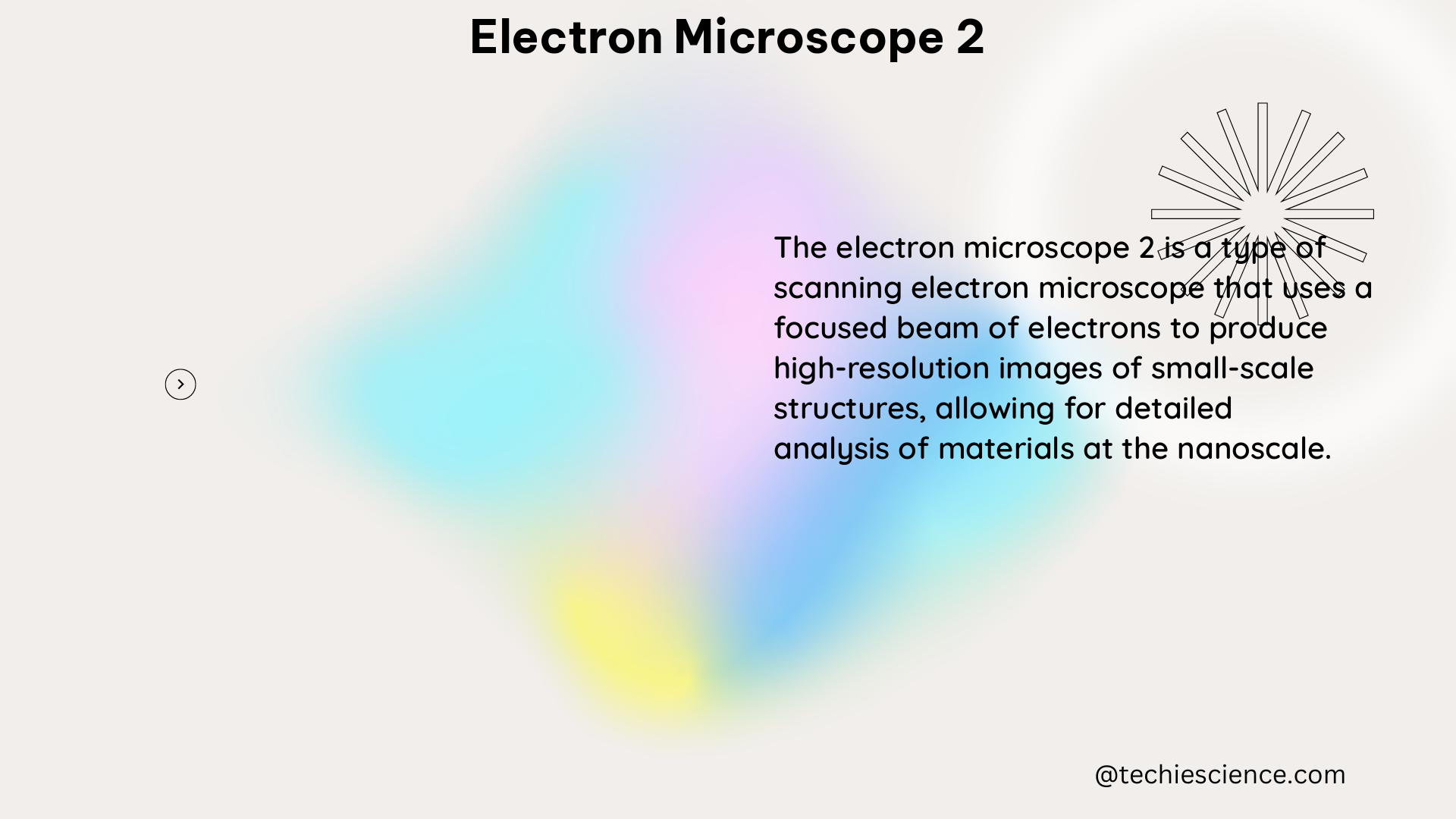The Electron Microscope 2 (EM2) is a revolutionary technology that has transformed the field of microscopy by providing high-end resolution at a lower cost. This cutting-edge instrument utilizes a technique called electron ptychography, which combines computational power with conventional transmission electron microscopes (without expensive aberration correctors) to achieve deep sub-angstrom spatial resolution. The researchers at the University of Illinois Urbana-Champaign have demonstrated a record-breaking resolution of 0.44 angstrom using EM2, surpassing the resolution of aberration-corrected tools and rivaling their highest ptychographic resolutions.
The Physics Behind EM2
The physics underlying the exceptional performance of EM2 is rooted in the fundamental principle that the resolution of a microscope is dependent on the wavelength of the illumination source. In a scanning electron microscope, the accelerating voltage is variable, and an electron accelerated by a potential of 30 kV has a shorter wavelength than one accelerated by a 5 kV potential. This means that the 30 kV electron should provide better point-to-point resolution.
Wavelength and Resolution
The relationship between the wavelength of the illumination source and the resolution of a microscope is governed by the Rayleigh criterion, which states that the minimum resolvable distance, d, is proportional to the wavelength, λ, and inversely proportional to the numerical aperture, NA, of the microscope:
d = 0.61 * λ / NA
Where:
– d is the minimum resolvable distance
– λ is the wavelength of the illumination source
– NA is the numerical aperture of the microscope
By using a higher accelerating voltage, EM2 can generate electrons with a shorter wavelength, which in turn allows for a higher resolution according to the Rayleigh criterion.
Electron Ptychography
EM2 utilizes a technique called electron ptychography, which removes aberrations computationally rather than using a stack of lens optics. This method can double, triple, or even quadruple the resolution of what a microscope can achieve with its physical lenses. The approach quadruples the resolution of conventional transmission electron microscopes.
The key principle behind electron ptychography is the use of a coherent electron beam and a series of diffraction patterns recorded at different sample positions. These diffraction patterns are then computationally combined to reconstruct the complex wave function of the electron beam, which contains information about the sample’s structure and composition. By removing the aberrations computationally, EM2 can achieve a significantly higher resolution than conventional transmission electron microscopes.
EM2 Capabilities and Advantages

High-Resolution Imaging
The EM2 has demonstrated a record-breaking resolution of 0.44 angstrom, which exceeds the resolution of aberration-corrected tools and rivals their highest ptychographic resolutions. This unprecedented level of spatial resolution allows for the detailed study of atomic-scale structures and the investigation of materials at the nanoscale.
Cost-Effective Solution
EM2 utilizes a new generation of detectors called hybrid pixel detectors, which cost a few hundred thousand dollars, compared to aberration-corrected microscopes that can cost up to $7 million. This significant cost reduction makes high-resolution microscopy more accessible to a wider range of research institutions and laboratories.
Computational Power and Efficiency
EM2 requires a substantial amount of computational power to achieve its high-resolution reconstructions. However, as with many other technologies, computational advances are rapidly progressing, making the process cheaper, faster, and easier to use. The ability to quadruple the resolution of conventional transmission electron microscopes through computational methods is a testament to the power and efficiency of EM2.
Applications and Future Developments
The exceptional capabilities of EM2 have far-reaching applications in various fields of science and technology. Some of the key areas where EM2 can make a significant impact include:
- Materials Science: Studying the atomic-scale structure and composition of materials, enabling the development of advanced materials with tailored properties.
- Nanotechnology: Investigating the behavior and properties of nanoscale structures, which is crucial for the design and fabrication of nanodevices.
- Biology and Biochemistry: Visualizing the intricate details of biological structures, such as proteins and macromolecular complexes, to gain insights into their function and interactions.
- Semiconductor Industry: Characterizing the defects and impurities in semiconductor materials, which is essential for improving the performance and reliability of electronic devices.
As the field of electron microscopy continues to evolve, further advancements in EM2 technology are expected. Improvements in computational algorithms, detector technology, and hardware performance will likely lead to even higher resolutions, faster data acquisition, and more user-friendly interfaces. The future of EM2 holds the promise of revolutionizing our understanding of the microscopic world and driving groundbreaking discoveries across various scientific disciplines.
References:
- Electron Ptychography Achieves Atomic-Resolution Imaging at Lower Electron Doses
- Ptychographic electron microscopy using high-brightness electrons
- Scanning Electron Microscopy
- Rayleigh Criterion
- Electron Ptychography

The lambdageeks.com Core SME Team is a group of experienced subject matter experts from diverse scientific and technical fields including Physics, Chemistry, Technology,Electronics & Electrical Engineering, Automotive, Mechanical Engineering. Our team collaborates to create high-quality, well-researched articles on a wide range of science and technology topics for the lambdageeks.com website.
All Our Senior SME are having more than 7 Years of experience in the respective fields . They are either Working Industry Professionals or assocaited With different Universities. Refer Our Authors Page to get to know About our Core SMEs.